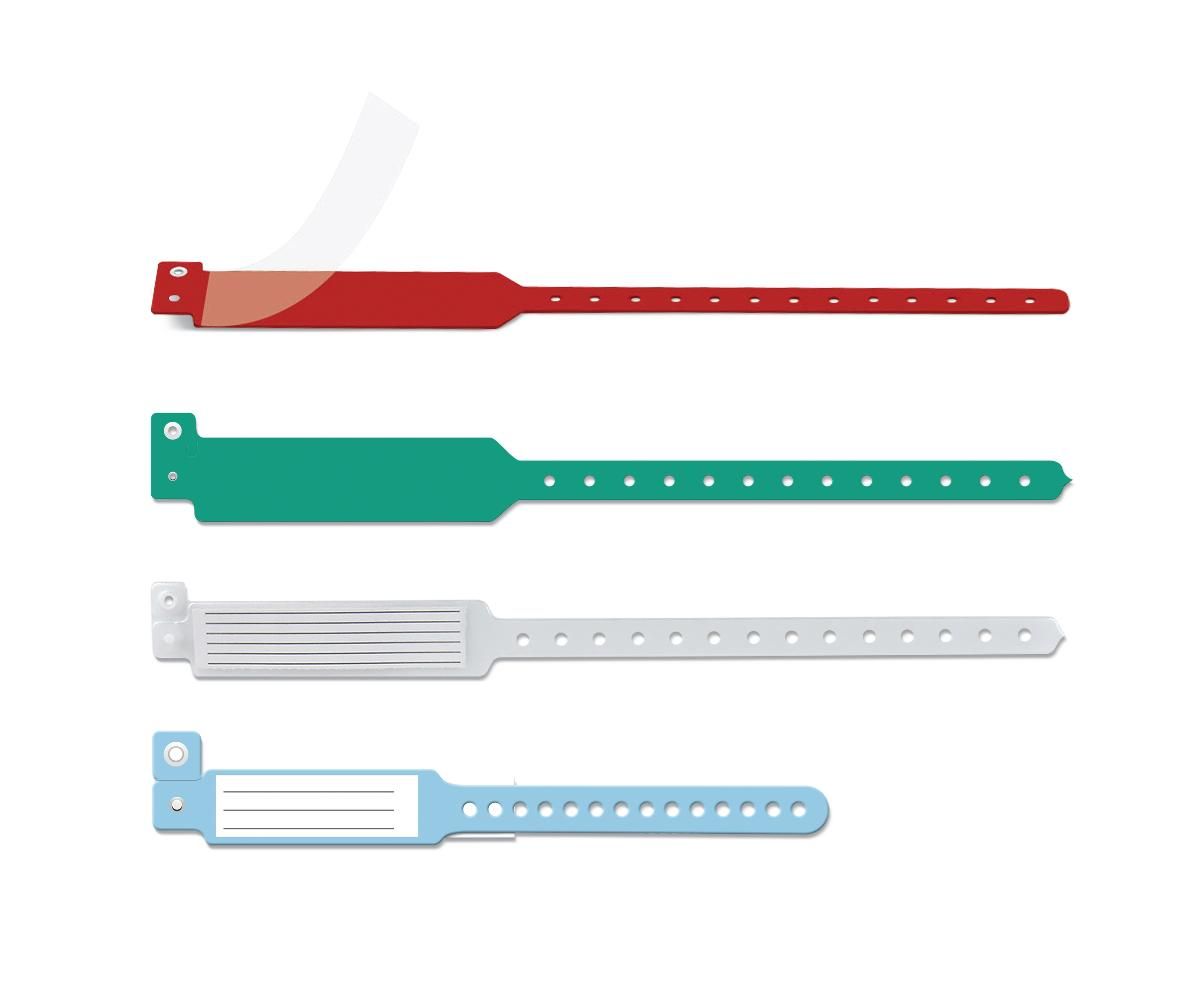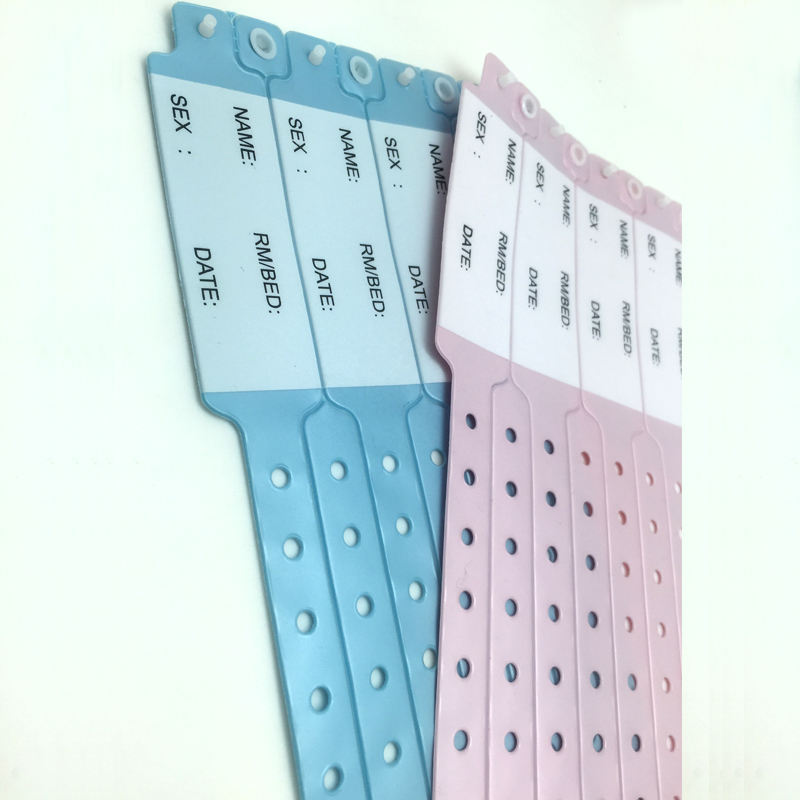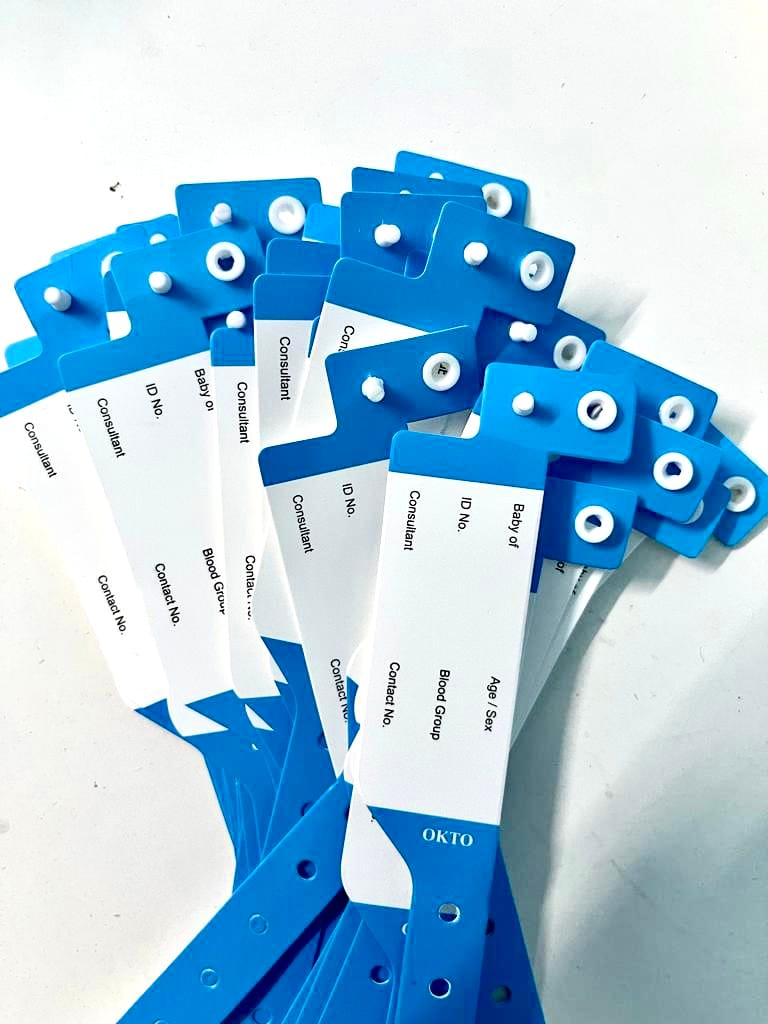Enhancing Safety And Security: The Significance of Person Identification Bands in Medical Care
In the world of medical care, the effectiveness of person identification bands can not be overemphasized, as they offer as a fundamental safeguard versus misidentification and subsequent mistakes. As we discover the multifaceted duty of these bands, it comes to be apparent that their significance extends beyond mere recognition, elevating inquiries regarding finest practices and future developments in patient safety.
Review of Person Recognition Bands
Client identification bands play an important role in ensuring the safety and security and precision of client care in medical care setups. These bands, usually endured the wrist or ankle joint, work as a vital tool for validating individual identity, thereby decreasing the danger of errors in therapy, medicine management, and other medical care treatments. Made from resilient products, individual identification bands usually consist of vital information such as the person's name, date of birth, clinical record number, and barcodes or QR codes for scanning.
The implementation of person identification bands is important in numerous health care environments, consisting of medical facilities, outpatient facilities, and long-lasting treatment organizations. They add to a methodical method in person administration, enabling health care professionals to swiftly and accurately recognize individuals, particularly in high-pressure situations where swift decision-making is crucial.
In addition, the usage of these bands is aligned with governing standards targeted at improving client safety and security - Patient Identification Band. By making sure that each client's info is conveniently accessible and easily verifiable, health care service providers can preserve a high requirement of care, decrease the incidence of unfavorable events, and foster a culture of safety and security within medical care institutions
Benefits of Accurate Identification
Precise identification is essential to boosting individual security and care high quality in healthcare settings. It acts as the initial line of protection against errors that can bring about negative individual outcomes. By ensuring that each person is appropriately determined through dependable methods, such as person identification bands, doctor can dramatically reduce the danger of misidentification, which can lead to improper therapies, drug mistakes, and also surgical mix-ups.
Additionally, exact patient identification facilitates effective communication amongst health care teams. When all personnel participants can continually determine individuals, they can share critical details much more efficiently, causing better sychronisation of care. This is especially important in emergency situation situations where timely treatments are important.
In addition, accurate recognition supports compliance with governing standards, consequently reducing the danger of lawful consequences for medical care facilities. It fosters depend on in between clients and medical care suppliers, as patients feel a lot more safe and secure knowing that their identities are being safeguarded.

Typical Challenges Faced
Ensuring efficient patient recognition in healthcare setups provides an array of difficulties that can endanger security and care top quality. Patients may show up in a state of confusion or distress, making precise recognition hard.
Another difficulty is the dependence on human elements in recognition treatments. Healthcare professionals might accidentally misunderstand or forget identification protocols, especially in high-stress atmospheres such as emergency situation divisions. This can lead to errors, consisting of the administration of incorrect treatments or medicines.
Technical concerns additionally pose challenges. Although electronic health and wellness document (EHR) systems are made to simplify patient identification, system failures or individual errors can interrupt the procedure. In addition, the physical layout of individual ID bands can bring about readability concerns, specifically in situations where bands are harmed or obscured.
Finally, inconsistent training among staff regarding recognition methods can cause voids in expertise and technique. Attending to these difficulties is vital for boosting individual security and making sure that identification bands serve their desired function efficiently.
Finest Practices for Implementation
To effectively implement patient identification bands in healthcare settings, organizations need to adopt a complex technique that prioritizes training, technology, and standardization assimilation. Standardization includes developing clear protocols for the style, application, and use recognition bands across all departments. This guarantees consistency and reduces the danger of errors linked to variances in band types or labeling techniques.


Training is necessary for all health care staff to guarantee they comprehend the significance of accurate individual identification, how to appropriately apply and hop over to here read recognition bands, and the procedures to follow in situation of discrepancies. Normal workshops and correspondence course can strengthen this knowledge and advertise a culture of security.
Technology combination plays a pivotal duty in enhancing the performance of client recognition bands. Utilizing barcode scanning or RFID innovation can streamline the recognition procedure, enabling for real-time confirmation of patient identifications. right here Additionally, electronic wellness record systems ought to be set up to include informs for inequalities between the identification band and patient information.
Future Trends in Person Safety
As health care remains to evolve, the emphasis on individual safety and security is likely to escalate, driven by developments in innovation and a better understanding of systemic risks. Emerging patterns show a change in the direction of more integrated systems that take advantage of information analytics, expert system, and maker understanding to boost patient identification processes. These innovations can assist recognize possible safety and security issues before they escalate, thus minimizing mistakes related to misidentification.
In addition, the execution of blockchain modern technology might revolutionize how patient information is firmly shared amongst medical care service providers, guaranteeing that identification bands are regularly precise and updated. This will not just boost person safety and security however likewise assist in seamless communication across multidisciplinary groups.

On top of that, the growing concentrate on tailored medicine is expected to affect person safety procedures. By including market and hereditary details into identification systems, health additional hints care specialists can customize treatments better, minimizing the threats of negative responses due to misidentification.
Conclusion
In final thought, individual recognition bands function as an essential part in boosting safety and security within healthcare environments. By facilitating accurate patient identification, these bands considerably decrease the danger of errors connected with misidentification, unsuitable treatments, and medication management. Regardless of obstacles in application, adherence to ideal techniques and the combination of emerging innovations can further improve their performance. Inevitably, the ongoing emphasis on robust recognition procedures will contribute to better individual results and overall safety and security in medical care setups.
In the realm of medical care, the effectiveness of patient recognition bands can not be overstated, as they offer as an essential safeguard versus misidentification and subsequent mistakes.Client recognition bands play a critical function in guaranteeing the safety and security and accuracy of patient treatment in healthcare setups. Made from durable products, patient recognition bands often consist of important details such as the client's name, day of birth, medical document number, and barcodes or QR codes for scanning.
By ensuring that each individual is appropriately identified with trusted means, such as individual recognition bands, healthcare providers can substantially decrease the risk of misidentification, which can lead to improper therapies, medication errors, and also medical mix-ups.
In conclusion, client recognition bands serve as an important part in enhancing security within medical care environments. Patient Identification Band.